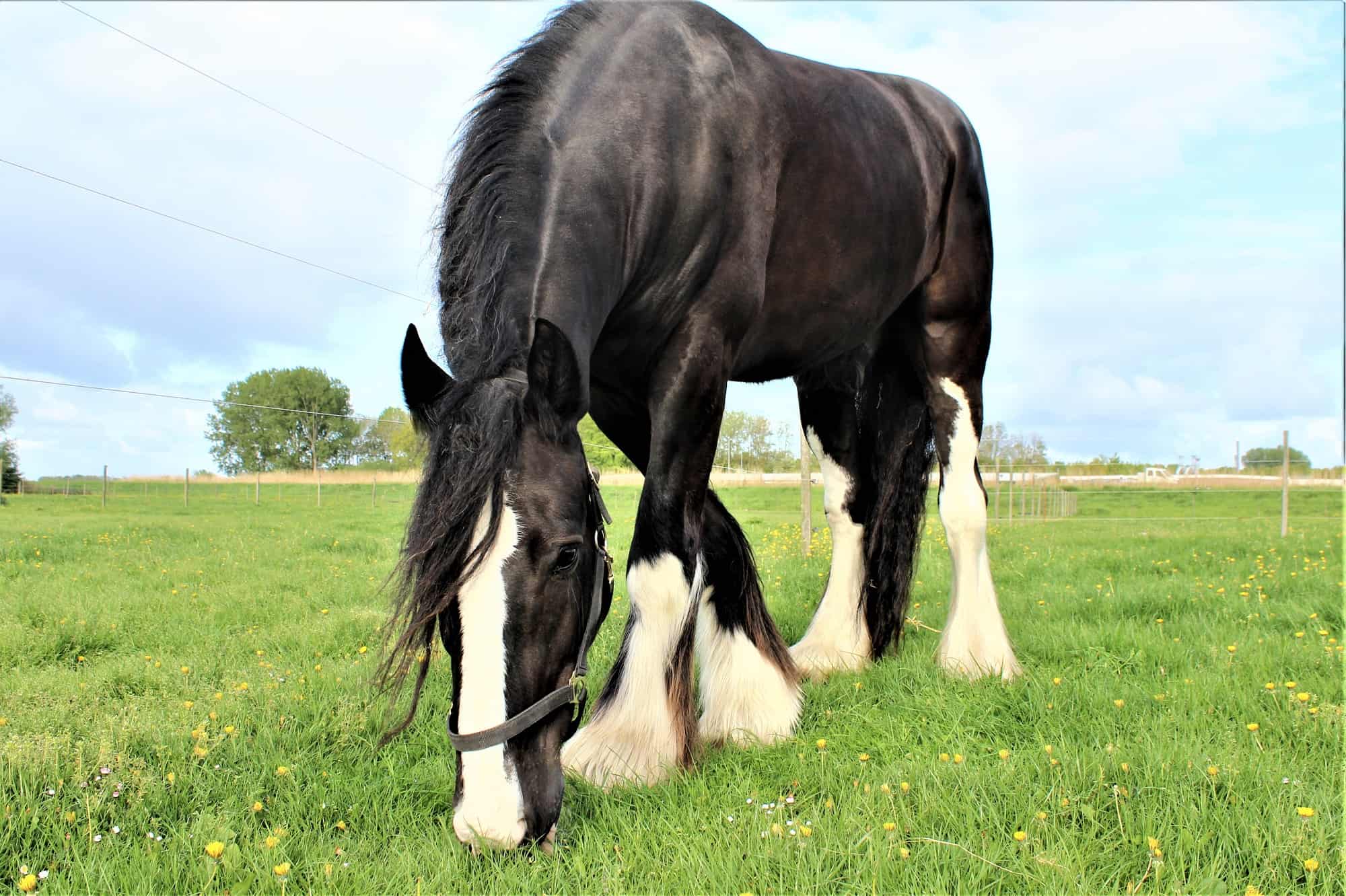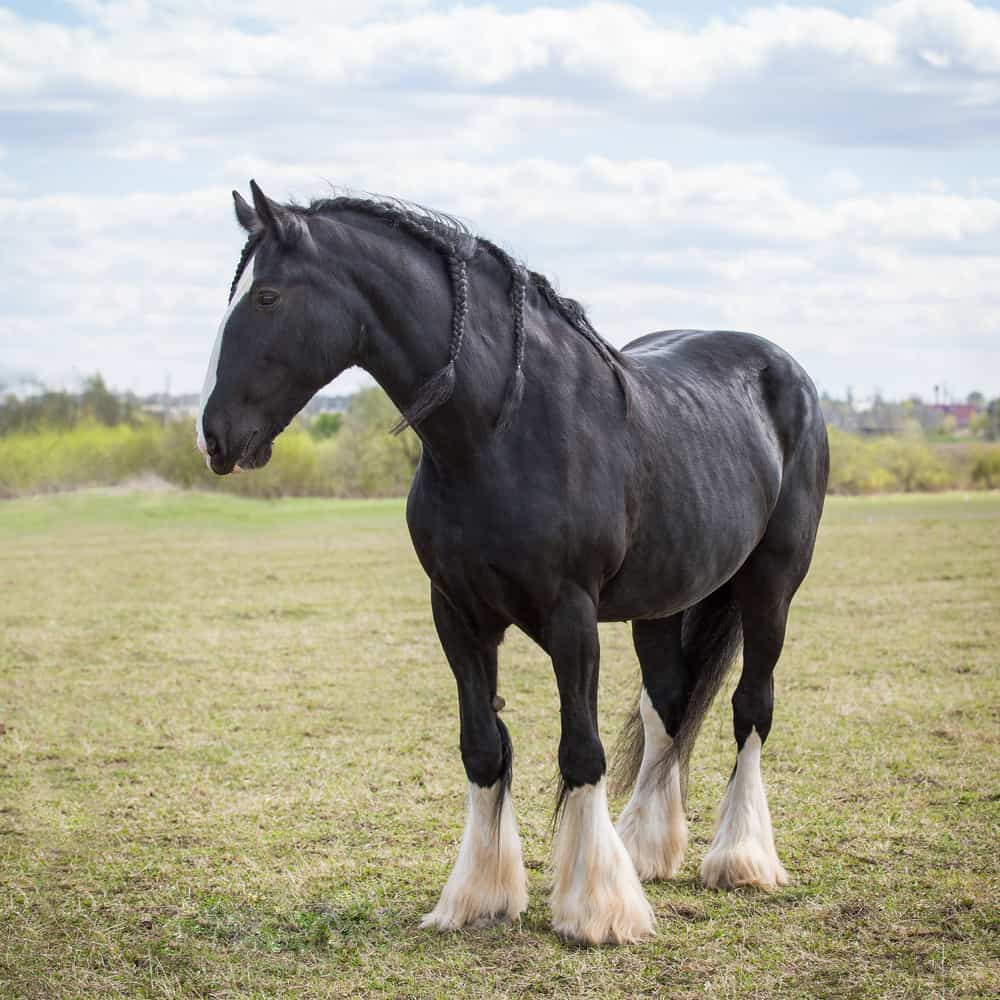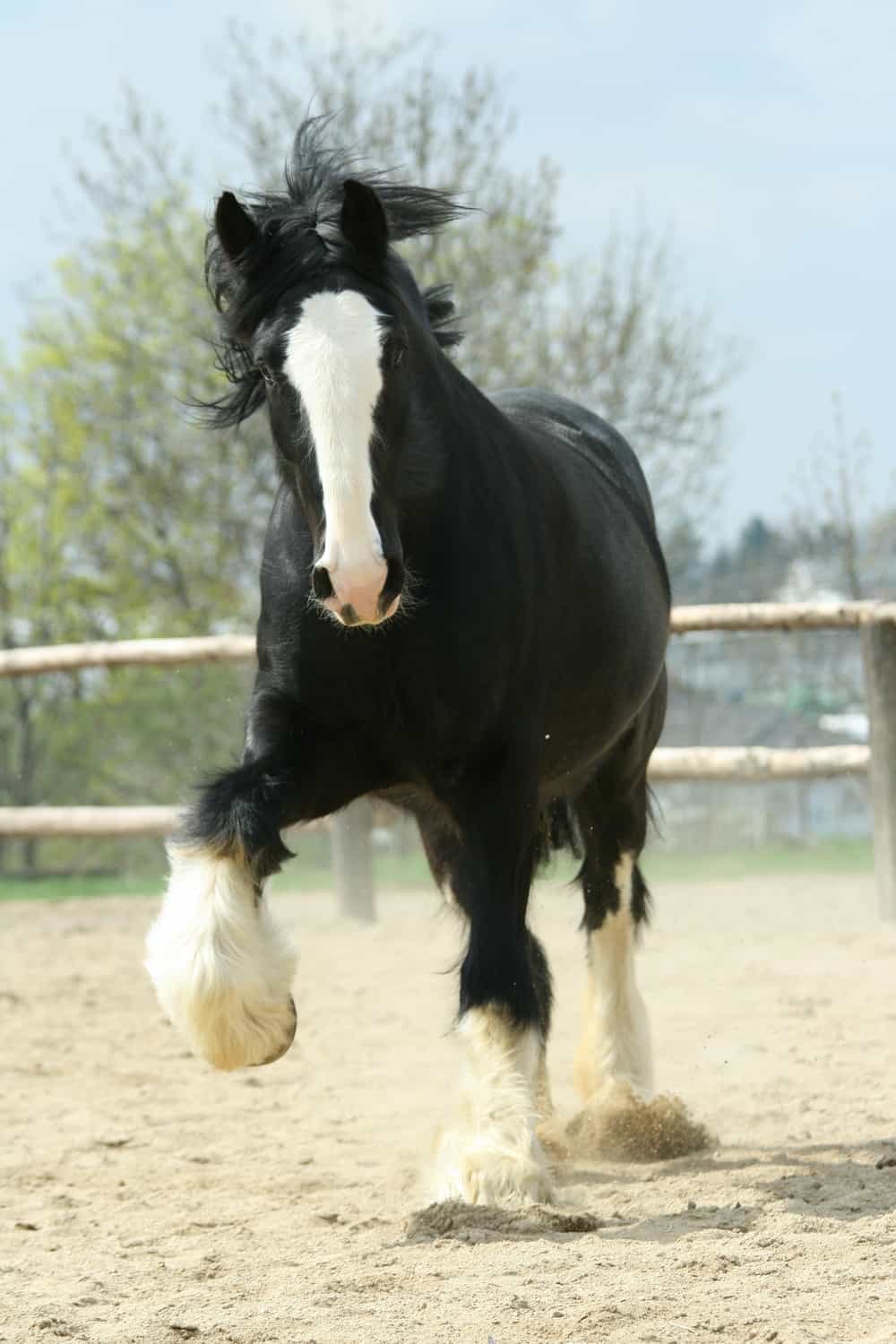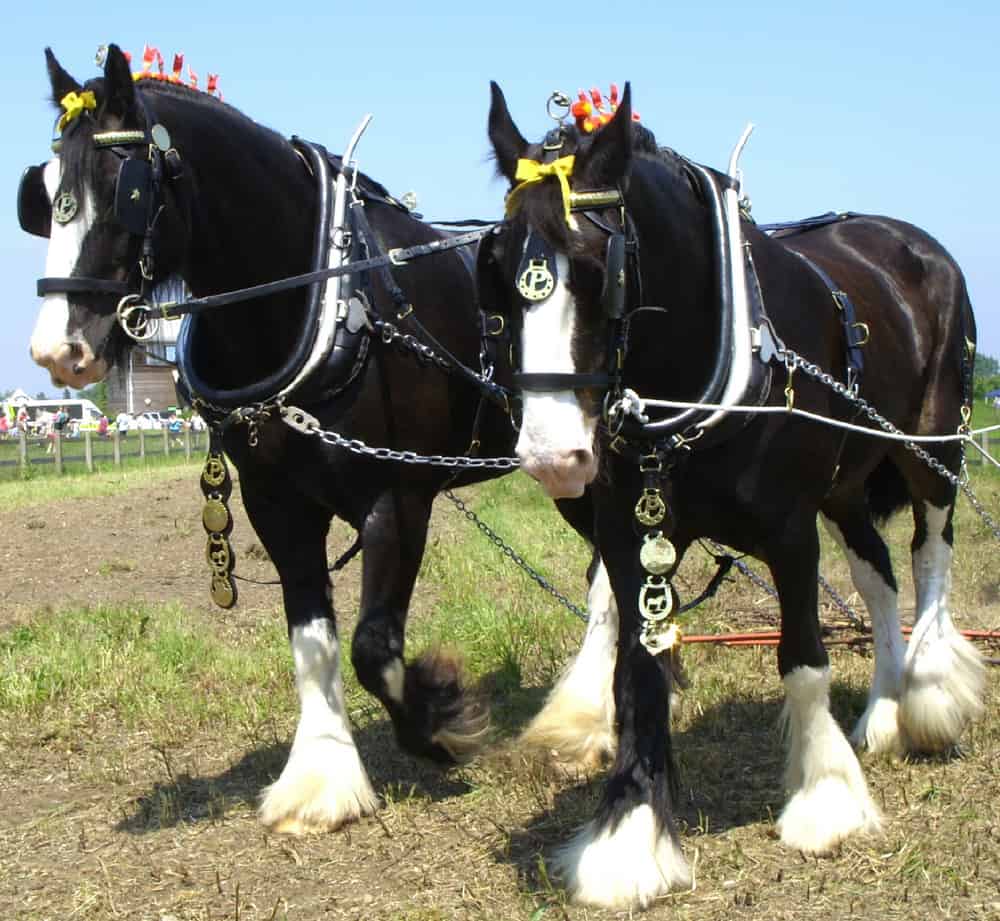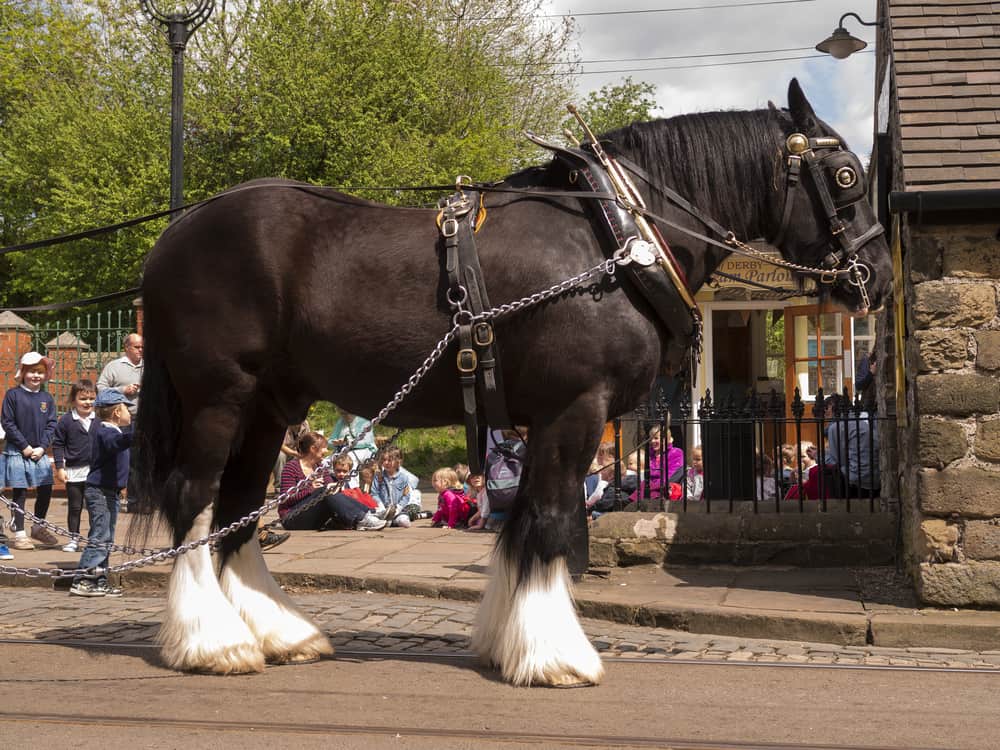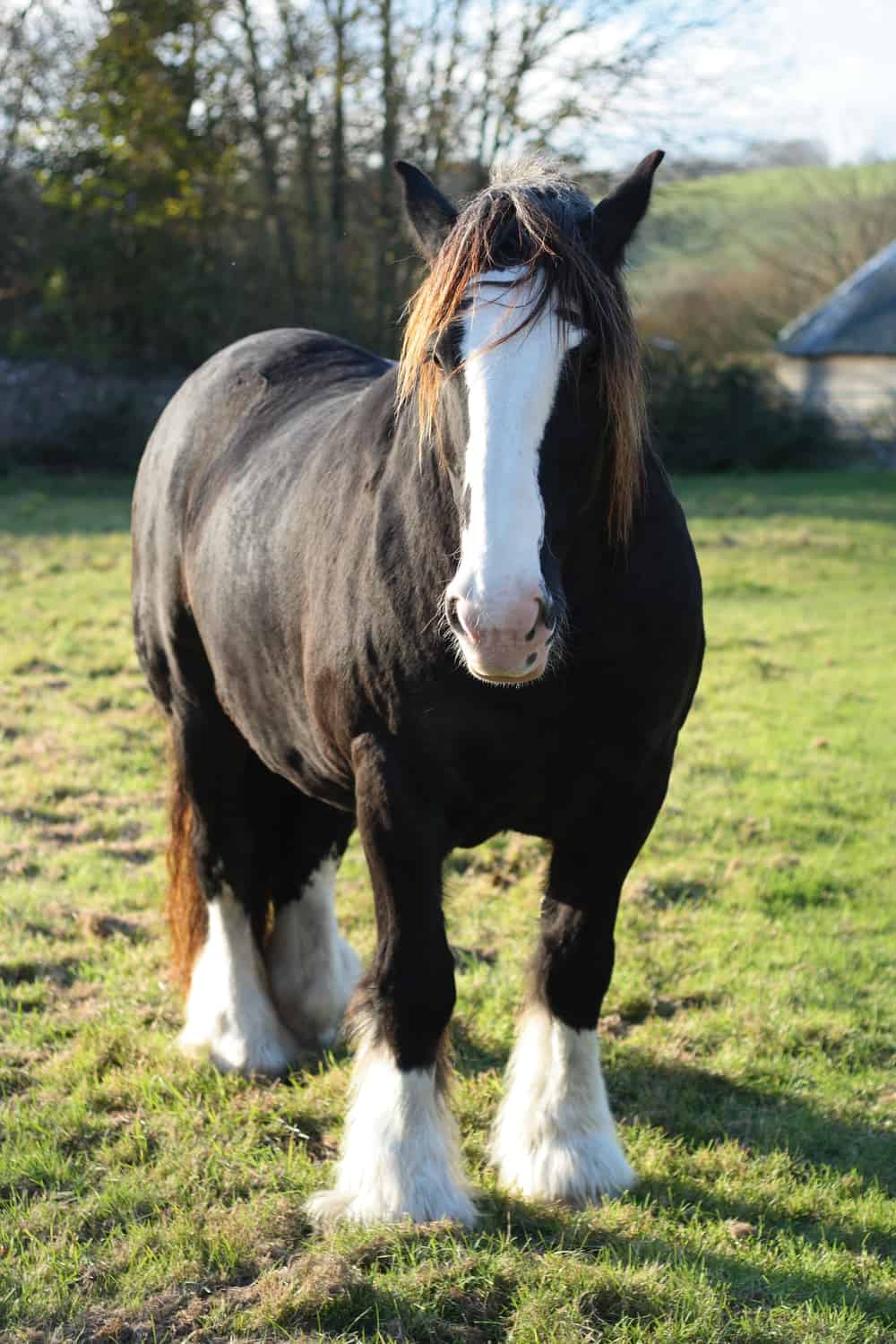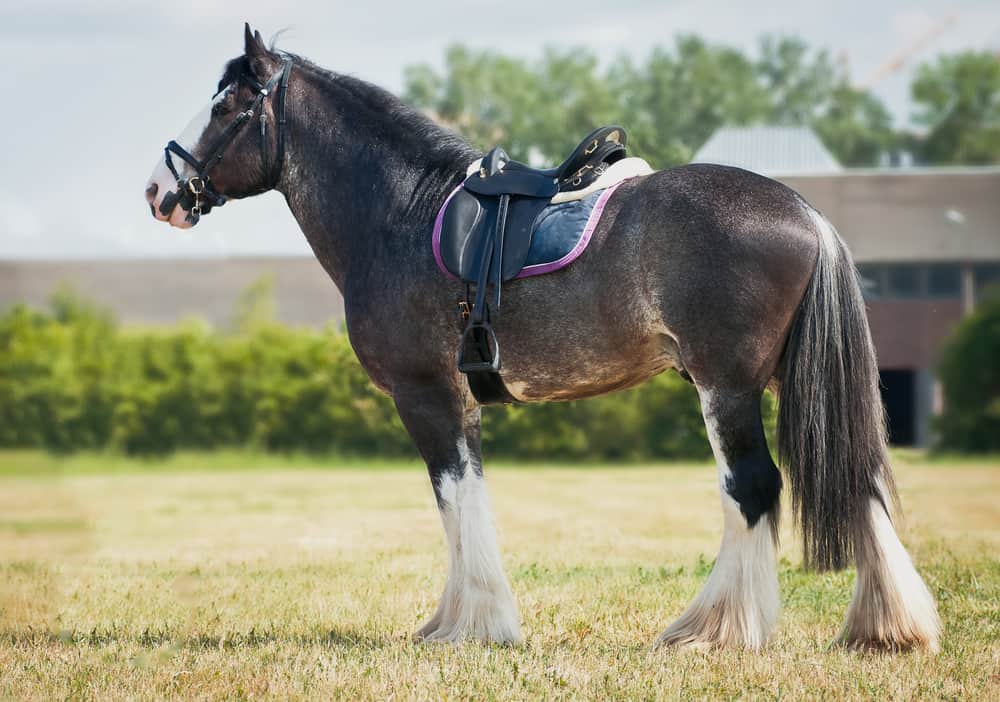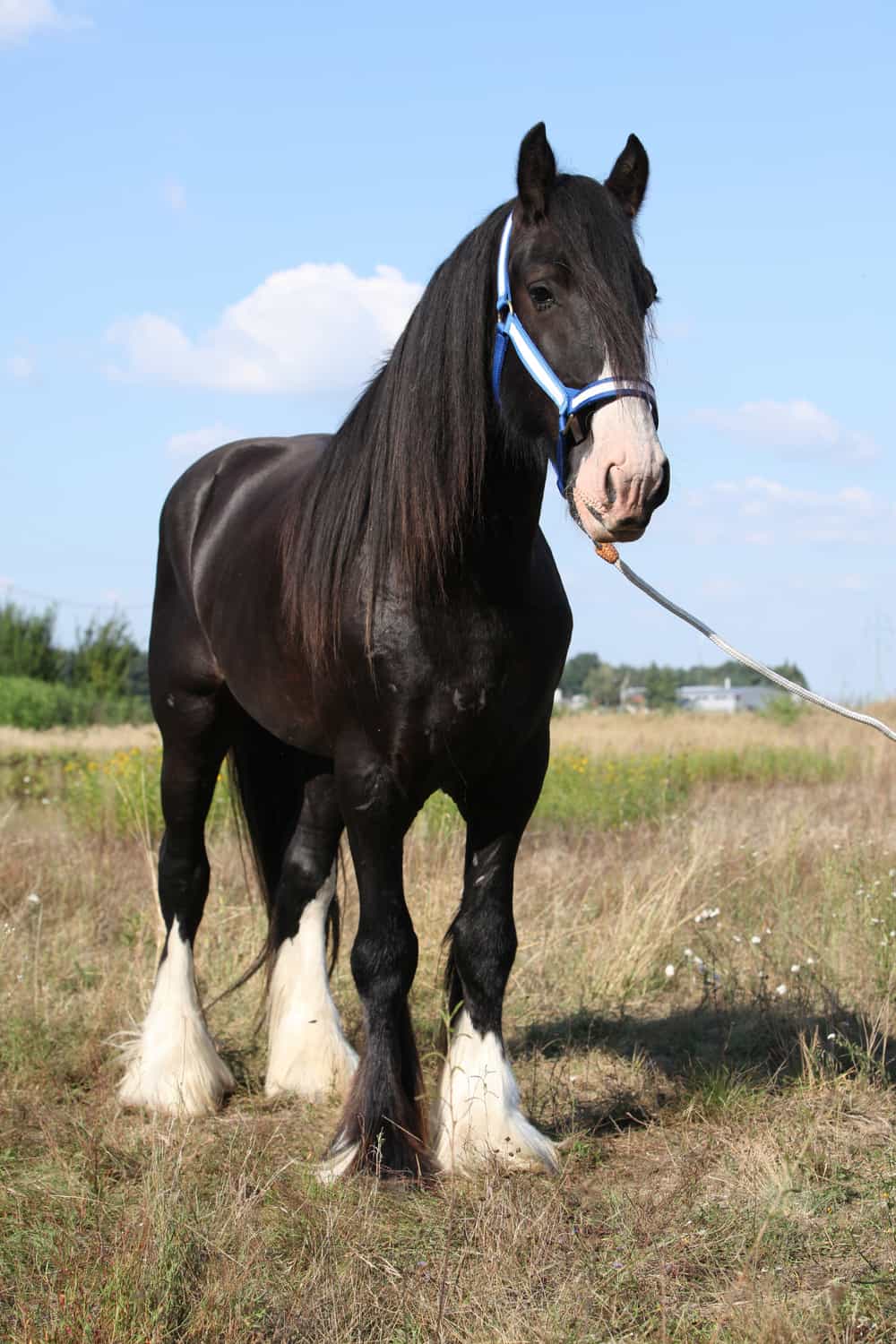Of all the breeds of draft horse, the English Shire Horse is among the most majestic. It has had a long and varied history, throughout which it has managed to stay useful and relevant despite the changing times due to its gentle character and impressive strength.
It is also perhaps a horse that is less well-known than others, so in this post, we’ll tell you everything you need to know about this incredible animal.
Appearance and character
The most striking feature of the Shire is its immense size – it’s among the largest of all breeds of horse. In fact, it is thought that the largest horse ever to live was a Shire named Mammoth born in 1846 and measuring 21.2 hands (218cm, 86in) at the withers when fully grown.
Despite their imposing size, Shires are known as gentle giants. They are calm, docile and don’t startle easily. They are eager to please and willing to work – and they are possessed of immense strength, enabling them to pull extremely heavy loads.
In Britain, to be registered as a Shire, stallions must be black, bay or gray. Chestnut is not allowed, although, in the US, this color is permitted. Mares and geldings may be black, bay, brown, gray or roan.
The legs are often white, and some white patterning may occur, although excessive white marks on the body or face are not considered desirable.
The average height of a Shire stallion is around 17.2 hands (178cm, 70in), although the minimum permitted height for registry is 17 hands (173cm, 68in). For geldings, the minimum is 16.2 hands (168cm, 66in) and for mares, it is 16 hands (163cm, 64in).
Shires are also characterized by their long, lean head, their large eyes and their long neck. They usually display feathering of straight, silky hair around the legs, although excessive feathering is undesirable.
Shires are elegant, handsome beasts, and it is no wonder they have come to be considered a beloved part of England’s rural cultural heritage. So now let’s look at the history of where this noble horse came from.
Early history – warlike origins
The exact origins of the Shire have been lost in time, but it is likely they are descended from the English Great Horse, an animal that was bred for war.
In Medieval times when knights began to wear heavy armor, the smaller horses and ponies of the day were no longer able to bear the weight of the mounted warrior, so larger, more powerful horses were bred.
As the technology of warfare developed and knights in armor were rendered obsolete by the advent of gunpowder, these horses fell out of favor in battle, to be replaced by smaller, faster, more agile cavalry mounts.
However, these large horses were far from obsolete themselves, and instead of being used in combat, they were increasingly used for draft work.
Development of the modern Shire – a powerful workhorse
The next important development in the story of the Shire Horse came in the 16th when Dutch engineers were brought over to England to help with the draining of the Fens.
The Dutch engineers brought with them their Friesian horses, which were bred with local English horses, and the resulting animals were a major step towards the modern Shire.
Following the introduction of Dutch blood to the line, these large English horses continued to develop through further selective breeding. By the mid-17th century, the term “Shire Horse” was already in use, and within another century, the breed looked much as it does today.
From around that time, due to their speed and intelligence, large and powerful horses began to replace oxen in the fields, which had until then been the mainstay of agricultural work – and the progenitors of the modern Shire were perfect for such employment.
A major development came with the invention of special harnesses for horses that allowed them to pull with their full strength. Until this point, the harnesses used with oxen prevented horses from breathing properly, which meant oxen had been far better at heavy farm work.
Another of the early uses for these powerful animals was as cart horses. The roads of the day were rough and uneven, so large and powerful horses were needed to pull carts loaded with goods around the country, and the Shire was perfect for such work.
As time went by, the quality of the roads in England improved, and smaller, faster horses were preferred for this kind of task – and as a result, Shires fell out of favor.
However, at around the same time, the country was entering the Industrial Revolution, and a new network of canals was being built. The Shires thus found new work pulling the barges that transported the huge quantities of goods that were now being produced.
The advent of the railway – and the reinvention of the Shire Horse
The next chapter in the story of the Shire Horse began with the invention and subsequent expansion of the railway. As England’s rail network grew, the once vital canals fell out of use, and the Shires were no longer needed as barge horses.
This didn’t mean they were no longer required for transport, however. The goods still needed to be moved from the railway stations to their final destination, and these ever-reliable horses were put to work carrying the goods to wherever they were needed.
This meant Shire Horses were still used to transport all manner of items around the countryside as well as for carrying items from train stations into urban areas.
Another traditional job they were used for – and on a small scale, still carry out to this day – was pulling brewer’s drays, carts loaded with beer, from breweries to public houses.
In 1893, breweries in England were using around 3,000 horses for this purpose, of which many would have been the strong and dependable Shire.
They were also required for other essential tasks such as coal transportation and garbage removal.
Mechanization and decline – the end of the Shire?
Throughout its history, the versatile Shire Horse always found its strength in great demand, so even when it was no longer required for one job, another use was inevitably found, guaranteeing the survival of the breed.
It wasn’t until the development of mechanized farming and road transport beginning in the early 20th century that demand for Shire horses finally began to decline.
It may have begun with the invention of the train, but it was the appearance of the tractor that signaled the end for the Shire horse as a common feature of life in England, and numbers began to fall.
Finally, with the outbreak of the Second World War, the price of the fodder required to keep such a large animal became prohibitive, and the population plummeted.
By the 1950s, from a total of around a million Shire Horses in England, only a few thousand remained.
Revival and reinvention
Thankfully, the Shire Horse didn’t die out completely. In the 1950s, Clydesdale blood was introduced to the line, changing the appearance of the feathering on the legs, and from the 1970s, a few determined breeders then set about trying to revive the breed.
Today, Shire Horses may no longer be required for farming or transportation, but their numbers have recovered somewhat – although the breed is still considered “at risk”, “vulnerable” or even “critical” by various agencies in the UK and the US.
The Shire Horse in the US
Although the Shire Horse is most closely associated with England, it was also exported to the US, starting in 1853.
Subsequent years – especially the 1880s – saw significant importation of the breed, and the American Shire Horse Association was created in 1885.
Unlike in England, in North America, Shires weren’t widely used for farming. Rather, they were brought in for breeding to increase the stature of the local farming stock.
However, just like in the UK, as farming became increasingly mechanized, draft horses fell out of use, and nowadays, Shires are a rare breed in the US.
Modern uses
In the modern world, Shire horses are not needed for the jobs they traditionally did since machines exist that can do almost everything far more quickly and efficiently.
However, some are still used for small-scale farming, either on farms that exist to demonstrate former farming practices or those that seek to use more ecological methods.
Shires are most commonly encountered in shows, either pulling carriages or in competitions. They are often seen in ploughing matches at agricultural fairs, which helps ensure age-old skills like ploughing and horsemanship don’t die out.
At the same time, the public is given a chance to see these horses in action, giving people a way to keep their cultural heritage alive.
Although the canals in England are no longer used to transport goods, canal boats are commonly used for leisure purposes, and while many are now powered, some are still pulled by Shire Horses in the traditional way.
Similarly, traditional “gypsy caravans” are sometimes seen being pulled by Shire Horses, again, mostly at rural fairs.
As mentioned before, one of the traditional jobs carried out by Shire Horses was pulling brewer’s drays, and a handful of breweries in England continue this tradition, notably Wadworth Brewery, the Hook Norton Brewery, the Samuel Smith Brewery and others.
Sometimes, Shire Horses are used for forestry work where motorized vehicles would cause excessive damage to the environment.
And finally, Shires are still kept for riding and other leisure activities by private individuals, so once again, the breed has found various niches in the modern world that allow it to remain useful, ensuring its continued survival.
Caring for a Shire Horse
In many ways, Shire Horses are easy animals to look after, and the main difficulty comes only from their size.
They require much the same diet as any other horse, which should include good-quality hay, grain, fruit and vegetables – it’s just that they need more of it than most other breeds. Of course, they also need more water too.
One thing you’ll need to pay attention to if you decide to keep a Shire Horse is the feathering about the legs. It requires regular brushing and cleaning, without which, the horse can develop skin irritation and infection.
The feathering also needs to be dried properly after washing because wet feathering can harbor fungal growth and bacteria.
Other than these specifics, caring for a Shire is much the same as keeping any other horse.
The final point to note is that equipment for a Shire may need to be made to measure since equipment for regular horses will be too small – and this may add to the cost of keeping one.
Health problems
Shire Horses are known to be prone to chronic progressive lymphedema, a disease similar to chronic lymphedema in humans that causes the horse’s legs to swell over time.
Polysaccharide storage myopathy is not a common condition in Shire Horses, although it may occur – and some vets recommend diets that are high in fat to help prevent it.
Other than these issues, Shire Horses are generally robust and healthy animals, and when properly cared for, you can expect them to live for an average of around 28 years or more.
Is the Shire the right breed for you?
Despite their stature and the related care issues, the Shire is an easy breed to keep and is even suitable for those with less experience of keeping horses.
This is because they are calm and docile animals that don’t scare easily, which makes them more forgiving of inexperienced owners or riders. They are also easy to train.
However, before deciding to buy a Shire Horse, you should consider the extra work and extra cost involved in owning one due to their size because caring for such a large animal might not be for everyone.
Finally, bear in mind that if you plan to ride the horse, you’ll probably need something to stand on when mounting it because it’s not easy with a horse as tall as a Shire.
A beautiful animal that has always found its place
As we have seen, the Shire Horse has been around for several centuries, and as a strong, willing and versatile animal, it has always found a place for itself as the world has changed around it.
Although Shires are not needed for most of the jobs they once did, they have again managed to establish a role for themselves in the modern world, allowing us to preserve this wonderful breed of horse and pass it on to generations to come.
